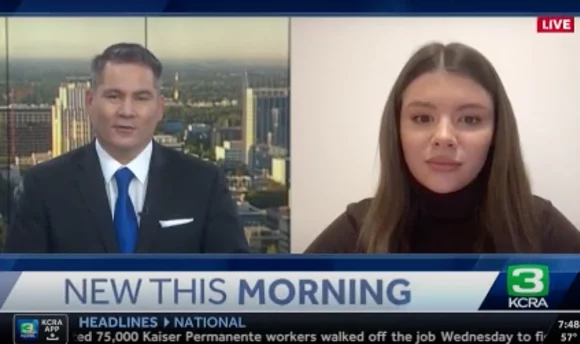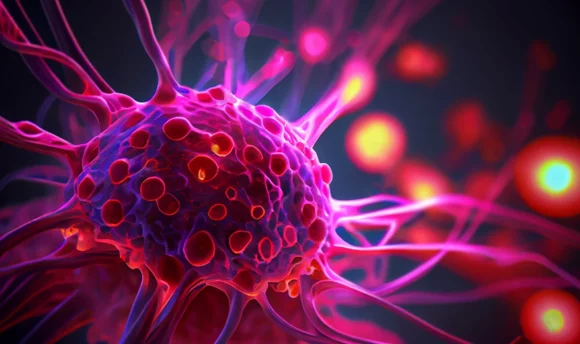Interview With David Starbuck Smith: "The body knows how to heal itself"
From court to core: David Starbuck Smith’s winning strategy against chronic pain

Welcome to HealthReporter’s exclusive interview with David Starbuck Smith, a former college and professional tennis player turned renowned whole-body coach, author, speaker, and founder of an online platform called Select Healing.
We chose to spotlight David due to his extraordinary journey from battling chronic pain as an athlete to mastering holistic health and wellness. His unique approach to intertwining emotional and physical wellbeing offers invaluable insights for anyone facing health challenges.
Join us as we dive into David’s transformative story and explore his innovative strategies for achieving mind-body wellness.
Can you describe your personal journey from being a professional athlete with chronic pain to a whole-body coach?
It’s been quite a journey. As a professional tennis player, first at UC Berkley, then on the Pro Tennis tour, experiencing debilitating hip and chronic lower back pain, not only impacted my game, but it was also affecting me mentally. I was desperate to find a solution. I sought out doctors, physical therapists, and athletic trainers, hoping to find the answers. Unfortunately, all the traditional pain-relieving methods fell short. But I was determined, so I began to seek out more “non-traditional” alternatives.
After graduating with a pre-med degree in Integrative Biology, I became a specialist in anatomy, biomechanics, and physiology. I also began some self-reflection, diving into my own personal growth, emotional and physical struggles. I realized I’d been carrying around decades of pressure and expectation from my parents, coaches, and myself, and transformed it all into anger and fear. In essence, my outer back pain was simply reflecting my deep, inner pain. I realized my chronic pain remained chronic, because I’d been treating it with physical solutions, only. I wasn’t treating the root of the cause.
That’s led me to where I am now. As a whole-body coach, I’m fascinated by the link between physical and emotional wellbeing, and I’m passionate about helping people find balance in their bodies and a path back to vibrant health, and pain-free living. In 2019, I wrote a book, Ageless, Painless Tennis, on how to treat and prevent chronic tennis injuries. And, this past October, I launched Select Healing, an online educational platform that helps individuals kickstart their wellness journey and restore their mind-body connection.
How did your own experiences shape your approach to healing others?
For the last twenty-one years, as an Accredited Exercise Therapist and Posture Alignment Specialist, I’ve provided solutions for people with all kinds of injuries, muscle strains, nerve, and joint pain. I’ve also been a consultant to the San Francisco 49’ers, UC Berkeley Football team, and TCU Men’s, and Women’s Tennis.
Along the way, I became curious about my clients’ physical pain and how it might be tied to something on the inside. My own personal struggle with chronic pain, the success I experienced with non-traditional pain-relief methods, followed by years of reflection and research, ignited a passion within me.
There’s a powerful connection between the mind and body. In fact, the brain values our emotional survival as much as our physical survival. Experiencing emotions like anger, fear, or hurt are perfectly normal, but chronic emotional stress is toxic to the body. When we avoid instances where we could be hurt, bury emotional trauma, and hold onto feelings of shame or blame, pain can manifest in physical ways and push the body into a major imbalance.
Postural stress is one example, as it’s a major component of all injury, joint pain, muscle strains, degenerative joints, sciatic, neck, lower back pain and any other muscle, tendon, ligament, and joint ailment you can name. But chronic pain doesn’t have to be a life sentence.
What are the most common misconceptions you encounter about chronic pain and its treatment?
Chronic pain is a REAL problem for over 50 million adults in this country, two-thirds of which are still suffering a year later. There are many misconceptions about chronic pain and how to treat it, but here are the most common myths I hear most.
The first is that chronic pain is an inevitable part of growing older. It’s a scientific fact that we can get faster, stronger, and healthier at just about any age. Nothing is permanent as it relates to your health or your life if you don’t want it to be. Whatever challenges you’re facing, there is hope. If given the right tools, and path, the body knows how to heal itself. From a purely physical standpoint, chronic muscle or joint pain is always about misalignment also known as postural stress, coupled with a functional limitation. Both of which are fixable.
Another misconception is that you need to live with the pain. This is absolutely false. Our bodies create new cells constantly. If you’re dealing with any kind of health issue, or simply want to look and feel better in body, mind, and spirit, it’s possible to radically shift anything in a relatively short amount of time. Many of us blame genetics for illness, injuries, and chronic pains, and even things like anxiety and depression. But this could prevent you from finding the underlying cause, which may be as simple as misaligned posture, or the result of previous emotional trauma. Thinking you must live with the pain leaves you powerless.
And lastly, there’s misconception on treating the site of the pain to fix the problem itself. In most cases, focusing on the site of the pain merely treats the symptom, which leaves the underlying factor that’s making it chronic unaddressed. Part of that is because in the western model, we are taught to look specifically at external symptoms, at knee pain or illness, for example, rather than look at the whole body as a unit. But the truth is, the pain we experience on the outside may be a manifestation of internal emotional pain. The key to healing chronic pain is to look for the root of the problem.
In your experience, how does emotional trauma contribute to physical pain?
Every thought, feeling, and emotion we experience, whether it be joy, gratitude, anger, shame, causes the brain to release a neuropeptide in the form of a neurotransmitter or a hormone that binds to specific receptor cells throughout the body. If someone often feels anxious and stressed every day, they have high levels of cortisol and adrenaline circulating in their body. This will eventually drain energy reserves, inhibit the immune system, create brain fog, and can lead to chronic gut and joint inflammation.
Burying deep emotions or holding onto traumatic events can drain energy. To make up for it, the body taps into muscles, joints, organs, skin, and the brain to find enough energy to heal that emotional wound. Eventually, this causes the body to become fatigued, which contributes to chronic pain.
After some guidance and my own self-reflection, I realized I’d been carrying around decades of pressure from my parents, coaches, and myself. Suppressing my anxiety, fear and pain also contributed to my chronic pain.
Could you explain how your approach in Select Healing differs from traditional pain relief methods?
Whole-body wellness is the key to longevity and fulfillment. Unlike traditional pain relief methods that primarily focus on pain management, Select Healing addresses therapeutic emotional and physical healing, both essential to unlocking the body’s own self-healing powers and restoring the mind-body connection. It’s not just about masking pain.
But to be successful, you must ask the right questions, enlist the right guides, and remove some of the conscious and unconscious protective barriers so that you can heal.
Select Healing’s comprehensive toolkit combines video presentations, motion exercises, and invigorating meditations to help people move, balance, and align the body, while creating awareness of thoughts, beliefs, and previous emotional wounds. Healing chronic pain can be done without months and years of therapy, and without spending thousands of dollars on medical specialists, trainers, and equipment.
You mentioned your online platform offers key strategies to live a pain-free life. Can you share some of these strategies and how they directly impact pain relief and overall well-being?
First, we want to create new habits of moving and balancing the body through the daily CARE exercises, which stands for connecting, aligning, rebalancing exercise. These exercises will connect the mind and body, align muscles, bones, and joints, improve posture, strength, and flexibility from head to toe. I’ve used this strategy for decades and it’s worked for thousands of people.
Learning how to cultivate self-awareness through meditation is another key strategy. By releasing emotional blockages and eliminating negative thinking patterns, we can make room for gratitude. Embracing more gratitude changes your brain waves from alpha waves to beta, which increases relaxation and productivity. It also decreases blood pressure, aids in better digestion, and increases immunity from germs and illnesses.
We often get stuck in an emotional box, dealing with the same frustrations, worries and fears every day. But unhealed pain, previous trauma or deep resentment also gets trapped in the body, and can manifest as physical injury, pain, or both. With Select Healing, my goal is to help break down these patterns, allowing the mind to let go of limiting beliefs, while embracing gratitude, joy, and fulfillment.
For someone just starting with your program, what initial steps do you recommend to effectively begin their journey toward healing chronic pain?
Transformation begins with three important steps: awareness, choice, and action. Understanding the power of the mind-body connection is essential. Have you ever noticed you’re more prone to injury when you’re stressed out? Whether you threw out your back, pulled a muscle, or injured your shoulder while playing tennis, if you think back on it, I’d be willing to bet something was going on at work or in your personal life that was stressing you out at the time.
To unlock the full potential for healing and happiness, and truly relieve chronic pain, people must make a conscious decision to look inside at current and past stress and dig deeper to see how that pain may be expressing itself physically. Again, we are not just trying to mask the pain. We are treating the whole body.
I also recommend finding a calm, safe space, free from judgement, where they feel comfortable engaging with Select Healing’s video sessions, which include targeted motion exercises and meditation practices. For people who have not meditated before, there’s no right or wrong way to do it. It’s more about connecting to their emotions in the present time, allowing themselves to feel whatever comes up. This is when they will feel the most grounded and alive, connected to themselves, and to others. Ultimately, this wellness journey is a very personal experience, and the goal is to feel refreshed, renewed, and reenergized.
What challenges did you face in developing your self-healing techniques, and how did you overcome them?
One of the biggest challenges I’ve faced is convincing people that their emotions play an important role in their chronic pain. We’re taught that the mind and body are separate, like two different buildings, connected via a footpath. And that’s how they’re systematically treated. If you have a problem with your body, you go to the doctor. If you’re experiencing emotional issues, you visit the psychologist.
To overcome this challenge, my goal with Select Healing is to educate people about their bodies, not just physical, but their emotional wounds, and help them connect how they feel on the inside to how they feel on the outside. It’s important that people who begin this wellness journey understand how emotions can literally change the chemical and biological environment within their muscles, joints, and organs. Neuroscience is very clear on that connection.
Similarly, for those who resist the mind/body approach, explaining how emotions like anger and fear play out in their bodies can be a challenge. Everyone experiences the mind/body connection every day; they just don’t pay attention to it. Anger and fear increase heart rate, blood pressure, muscle tension, and respiration, to name a few physical responses. When I explain this connection between the emotional and physical response through something like anger, the mind/body approach becomes much more digestible.
Conclusion
In our enlightening conversation with David Starbuck Smith, we’ve journeyed through his transformative path from a pain-stricken athlete to a pioneering whole-body coach.
David’s unique blend of personal experience and professional expertise illuminates the crucial link between emotional well-being and physical health. His story is not just a tale of overcoming adversity but a beacon of hope and guidance for those seeking holistic pathways to wellness.
As we conclude this interview, we carry with us David’s profound insights and the reminder that in the interplay of mind and body lies the key to unlocking our fullest, healthiest selves.

















































 Select your language:
Select your language: 







